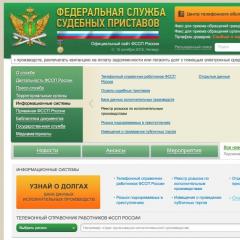How to flash documents: detailed schemes with description
When dealing with a large amount of documentation, it must be systematized somehow. It can help this firmware that is used in the office work in the transfer of important securities to the archive or further verification. While creating documents in this way, you may not worry about the possibility of substitution, because it will not leaving traces, it will be almost impossible. How to sew business and what is needed to flash documents, this article will tell (ready-made samples are also presented below).
In any field of human activity, where he has to deal with a large number of documents, do not do without their systematization. Some papers go to the archive, while others continue to be used in work. And those and others are often tailored, but before switching to this action, let's find out when it is appropriate. 
Documents subject to firmware
Not all documents of this or that organization are subject to stitching, so it is important to understand which paper is suitable for this procedure. First, it is logical that you do not need to understand how to put a document if it consists of one sheet, however, if there are two and more pages in it, then the information below will be useful.
- So, employees of personnel services should flash:
- orders of personal and general composition
- as well as staff schedule.
- Accountant perform the specified procedure with:
- advance reports,
- overhead
- invoice invoices
- path sheets
- cash books,
- negotiable conductions,
- acts of work
- as well as wage by wage, if it is issued in hand.
Information on how to fite documents, it will be needed in the event that you are dealing with copies of legal entities, only in this situation is not needed.
Simply put, the firmware of documents is carried out by almost all structural divisions of institutions and companies, and the difference consists only in the method of performing the procedure.
Regulatory acts regulating documents
To date, there is no single standardwhich would definitely explain how to flash documents in various structures, but some regulations are still available (one of the examples of the possible firmware of GOST papers is presented in the photo below). 
Thus, the recommendations on the sewing of various documents are listed in "office work and archival business", approved by order of Rosarhiva dated 23.12.2009 No. 76, as well as in the order of the Ministry of Culture of the Russian Federation No. 536 of 2005, approve of the Model Instructions for the Office, the Instructions of the Central Bank of Russia, Methodological explanations in order to fill individual forms of documents approved by the Order of the Ministry of Taxes and Claims of 2003 and GOST R 51141. In addition, the requirements for flashing securities were developed by both sectoral departments (for example, the Ministry of Taxes and Cancers).
How to flash documents: detailed schemes with description
There are several options for how to correct the documents to threads, because this procedure can be performed both in two holes and three, four and even five.
In two holes
The firmware of papers in two holes is the easiest way to fasten them, and most often it is used in the design of papers that are not particularly important. However, in this case, some specialists have certain issues, therefore, to perform work correctly and accurately know how to flash documents in 2 holes, we recommend adhere to the following scheme:
- Before starting, use the hole and make two holes in the document (you can also break through the paper, using a regular needle, but in this case you need to be extremely neat).
- Next, take the thread and skip it through both punctures, and so that its ends are on the back of the papers.
- Then tie the ends of the thread among themselves and get a rectangle on them, which you need to cut out the white tight paper in advance. It should well hide the node, but not to close it completely.
In the event that the shelf life of the document will exceed 10 years, it is better to take papyrus paper for a rectangle.
The list indicates the number of pages in the document and the data of the specialist who assured it (full name and signature) is noted. This is the easiest answer to the question of how to correctly flash documents by threads, and more complex and frequently used combinations are presented in the photo below.
In three holes
As in the previous case, to sew documents, you need to pierce the paper, only in this embodiment, the distance to 3 holes should be calculated (it should not exceed 3 cm).
After the holes appear in the sheets, turn the document and skip the thread into the middle hole (its tip should appear from the first sheet), leaving at least 7 cm from the back side. 
Now, with the front side of the papers, it is necessary to pierce the upper hole and direct the needle with a thread into the lower puncture from the back side. 
As soon as she turns out to be on top, they are again passing through the middle, seeking appearance from the back. 
At this stage, you can cut off the thread, leaving 7 cm from it, and tie it with the existing residue. 
A small rectangular sheet is pasted on the resulting nodes, which will be marked with the number of sheets and the vested signature.
If you did not know before, how to flash documents in 3 holes, then using this scheme, there will be no problems.
Instead of a needle or hole panel, it is possible to use a sewer, but for the role of threads for firmware of documents, kapron products or special twine are perfect.
It should be noted that using the specified information, you do not have to think long and how to flash the registration log, the main thing is to choose a solid cover and carefully numb all the pages, since after stitching it will change something will be impossible.
In four holes
Having understood how to flash documents in 3 holes, for you will not be much difficulty performing the connection of papers in 4 puncture. The process passes almost similar to the previous option, only the distance between adjacent holes should be about 1.5 cm.
In this case, the stitching begins from the second hole above (from the back side), after which the thread is passed through the top hole, and the needle is output again on the second. Next, the thread is started in the third hole, and then (from the back of the fourth).
At the end of the process, the needle is in third hole from the front side, and after removing the threads, the nodule is tied. The already mentioned small rectangle is glued on top of it.
To make it easier to understand how to flash a document in 4 holes, give the following photos with a marked scheme of work. 
In five holes
Five holes are used mainly to stitch accounting documents, as in the end, their thickness turns out to be much greater than that of ordinary documents. This is perhaps the highest degree of protection, which is only capable of firmware. Holes should be located on the left side at a distance of 5 cm from each other.
Folding all the sheets in the correct order and numbered them, you can hold the documents in a special press and using a drill with a thin drill to do the desired holes: two of which should be located at the edges (retreating from them at least 2 cm), one in the center and two more - Between the center and extreme holes.
In order not to damage the sheets of paper, you must use a cardboard cover.

When the holes are ready, it remains only to sew a stack of documents using a drop-down thread and a large needle, referred to as the people of Gypsy. The document file sharing in the archive in this case looks like this:
- With the back of the stack of papers, the needle is passed into the middle hole, leaving about 10 cm of the thread (tail).
Then the thread is stretched into the second hole from above (although you can move and down) and again remove from the back side.
- Next, by the type of snake, the needle with a thread is displayed through the top hole (it turns out from the front side) and again "dives" down through the second hole. Thus, one edge is ready.
- Now, holding a thread at the middle hole, you need to push the needle through it from the back side (as at the beginning of the procedure) and bring it to the original position to direct the hole at the second bottom.
- Again, by the type of snake on the back of the documents, the needle is filled into the lowest hole, and as soon as it turns out to be upstairs, it is once again sent down through the second hole.
- Thus, on the back side, you have already turned out two tails that need to be tied on the knot, cutting off the extra pieces (if you use a special press, it will be possible to release paper from it only after this procedure).
Turning out documents from the press, it remains only to open the cover and outline her festers from the back side, which, turning back, partially close the tails of the threads. So that this bend is better to hold, it is not only missing in PVA glue, but also samples in the middle of scotch, besides which the rectangular leaves with information about the numbering and firmware will also be placed on the threads. On the lateral part of such a book, you can stick with the title: for example, the "sales book for 2016". 
Before finding out how to properly sew the documents with a thread, and view the photo, step by step by studying the specified process, it is necessary to remove all paper clips and clamps from the papers, sorting by date and numbered each sheet of documents carefully connected to each other.
Naturally, when preparing for the procedure, you can excite not only how to properly miss the paper, but also how to numbered documents without allowing errors. There is nothing difficult in this: page numbers are affixed by Arabic numbers (sometimes Roman) and begin with numbers 1 (ascending), and the inventory is not numbered.
If the cover is required, then for it a special cardboard is selected with the inscription "Case", which can be of various sizes and quality. To flash ordinary documents, a conventional stapler for document A4 is often used.
The numbering is subject to both envelopes in documents, the numbers on which are affixed primarily, and after it, all the sheets and photographs in it are numbered.
If an error was made at the numbering of important securities, then it is simply burned with one line and then continues to be numbered. At the same time, the sheet must be assured the inscription "corrected to believe", putting the signature and the seal of the responsible person.
The main requirement for linked papers is inviolability, that is, if the necessary documents are already sewn and numbered, but you need to add some addition (for example, a sample of the filled statement), it will need to be sampled either by a separate volume, or disassemble everything and nano alone . In case of admission errors in numbering, it is possible to use a literary numbering. Simply put, the same figure is put on the missed list, only the letter (16a, 17b ...) is added to it.
In case of a more serious violation of the numbering, it will have to be updated. To do this, it is necessary to neatly cross the wrong written numbers and specify new ones. The information on all changes will need to be added to the witness inscription: to cross old data and write new ones next to them.
Stitching of documents to the archive or verification can be performed much easier, but this will require a special binding machine and an autonumber. Unfortunately, most often this method of systematization of papers is available only in printing houses.
Requirements of papers - the last stage before they are submitted to check or storage. However, if this procedure is incorrect, then you will have extra problems. Therefore, it is very important to know exactly how the specified process is performed and who answers it. 
Who can assure stitched documents
As soon as you correctly numbered and passed the documents by issuing them in a kind of magazine, you can proceed to the assurance of securities. Conscription is called the signature of an authorized person who is responsible for the transfer of these papers into a tax inspection, archive or other instances.
Only the head of the institution or enterprise or an authorized compiler can be fulfilled, the duties of which include an indication on the sticker of his position and decipher the signature. In addition, the necessary mark can also put a private entrepreneur, but in any case it is better that the signature stood at the same time on the sticker, and on the sheet.
By signing the stitched documents, the manager assumes responsibility for their contents or appoints the responsible for the accuracy of another employee by signing the appropriate order.
Requirements for the design of stitched documents for assurance
As you already understood, heded the documents with threads - only half the way, since it is necessary to assure them right. In order to perform the specified procedure, you must prepare a sticker (you can type in the MS Word program and print) with a size of 5 x 6 cm. It indicates information about the number of pages in the case (not only in numbers, but also in words), about the features of the subfed documents ( For example, some of them may be damaged), and the name is marked, the position and signature of a specialist who was engaged in the firmware. This fragment of the paper is fixed by the node of the threads on the last page, after which the enterprise is placed: one part of the output should be on the sticker with the inscription, and the second on the sheet. 
In order for the novels of the threads is well noticeable, it is better to take to the stickers of cigarette paper, and liquid glass (stationery adhesive) is suitable as glue. In some cases, the edges of the prints of the print and the thread are also poured with glue, but such extent is resorted only when drawing up accounting documents of increased importance. In general, all of these measures are good securities protection and confirm that all the semitted documents are genuine.
Having understood how to correctly numbered documents during the submissions and in which sequence this procedure passes, you can no longer worry about refund and the need for re-systematization by lacing.


